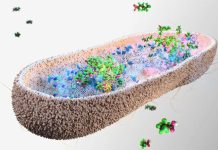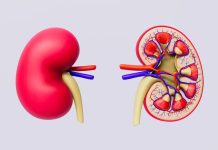
Interstitial cystitis causes chronic pain in the bladder and pelvis area.
More than 1 million people in the United States, mostly women, are estimated to have the condition.
A drug widely prescribed for a bladder condition, Elmiron (pentosan polysulfate sodium) is the only FDA-approved pill for the disease.
As a mainstay of treatment for decades, hundreds of thousands of people have likely been exposed to the drug.
An initial report last year reported that six patients who had been taking Elmiron for about 15 years the drug developed eye damage.
In a recent study Kaiser Permanente in Northern California, researchers found this bladder drug appears to be toxic to the retina, the light-sensing tissue at the back of the eye that allows us to see.
The study was presented at the 123rd Annual Meeting of the American Academy of Ophthalmology.
In the study, three researchers conducted a review.
They found 140 patients who had taken an average of 5,000 pills each over the course of 15 years. Of those 140 patients, 91 agreed to come in for an exam.
Twenty-two of the 91 patients showed clear signs of drug toxicity. The rate of toxicity rose with the amount of drug consumed, from 11% of those taking 500 to 1,000 grams to 42% of those taking 1,500 grams or more.
In addition, this medication toxicity could masquerade as other known retinal conditions, such as age-related macular degeneration or pattern dystrophy.
The team says for a patient with a chronic condition like interstitial cystitis, there is no cure and no effective treatment.
Patients get put on these medications because it’s thought to have few side effects and few risks, and no one thinks about it again.
Because it’s unclear how much medication is too much, the team recommends patients who show no signs of toxicity be screened for retina damage at least once a year.
For those who do show some signs of damage, he recommends they speak with their urologist or ob/GYN about discontinuing the medication.
The good news is that if identified early, the damage may be mitigated by stopping the medication.
Copyright © 2019 Knowridge Science Report. All rights reserved.



